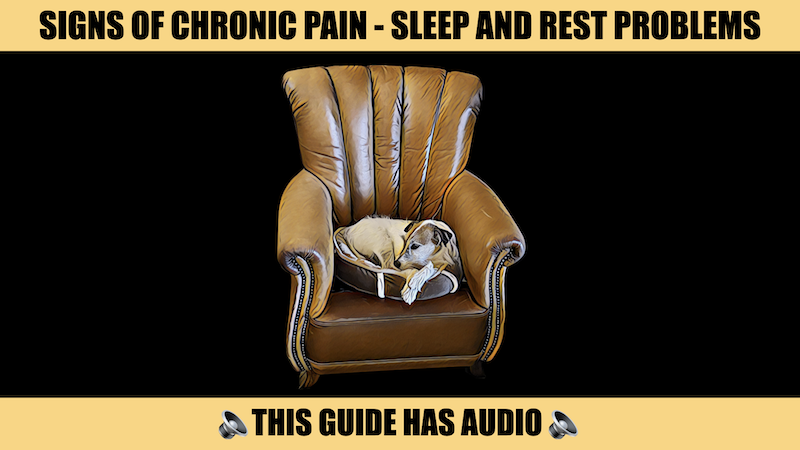CHAPTER 1 - ALTERED BEHAVIOUR
READING TIME: 1.5 MINUTES
Altered behaviour can indicate pain, but not always. Altered mood, reduced playfulness, and vocalisation are also signs of anxiety or illness. Accurate interpretation requires the input of your dog’s veterinary team.
CHAPTER 2 - ALTERED FUNCTION
WATCH TIME: SIX 1 MINUTE VIDEOS
The most consistent signs of pain are also the easiest to detect. These include limited mobility, restlessness, and stiffness. Here are 6 videos which teach you what to look for.
CHAPTER 3 - PAIN MEASUREMENT
COMPLETION TIME: 3-7 MINUTES
STRESS AND CHRONIC PAIN
Chronic pain causes anxiety from the fear of continued pain and the fear of not recovering. This form of anxiety affects carers as well as patients. Carers who worry they won't meet their responsibilities can become very stressed. Dogs read our emotions better than we read theirs. Consequently, a carer's anxiety can easily become a dog's anxiety. Caregiver stress syndrome has important negative impacts on dogs and their carers. Scroll down to learn more about canine stress syndrome and cognitive dysfunction.
-

CANINE STRESS SYNDROME
There's a strong relationship between pain and emotional disorders. Stress can be a cause or an effect of chronic pain. The canine stress calculator (CSC) asks 28 questions. They identify triggers such as veterinary visits, thuderstorms or moving house. If an anxiety disorder is identified, specific treatment can improve concurrent chronic pain.
TIME TO COMPLETE: 5-6 minutes
-
CANINE COGNITIVE DYSFUNCTION
Canine cognitive dysfunction (CCD) shares features with Alzheimer’s disease in people. Some signs of CCD are easily confused with signs of chronic pain. These include altered mood, interrupted sleep, and restlessness. Other signs are more specific. These include reduced recognition of people, animals or objects and aimless wandering.
TIME TO COMPLETE: 3-4 minutes













